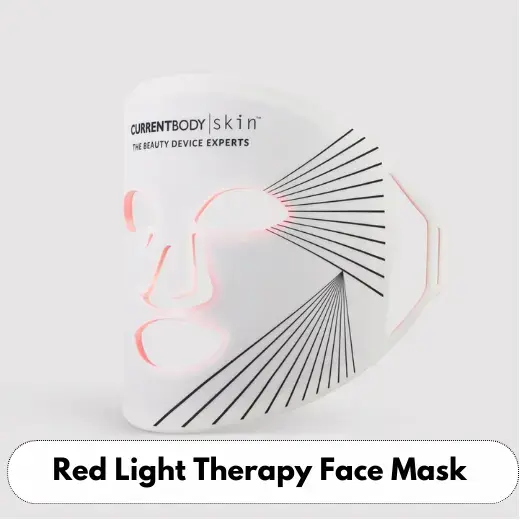Red Light Therapy at Home: Benefits, How-Tos, and Safety Tips
- Dr. Alpana Mohta
- Jan 26, 2024
- 3 min read
Updated: Jun 11, 2024
Red light therapy, an innovative and non-invasive treatment, has transitioned from exclusive dermatologist offices to the comfort of home. This detailed guide delves into the nuances of red light therapy, offering a holistic understanding and practical advice for those seeking to enhance their health and skin wellness at home.

Deep Dive into Red Light Therapy
Red light therapy, also known as low-level laser therapy (LLLT) or photobiomodulation (PBM), utilizes specific light wavelengths to penetrate the skin.
It's renowned for its ability to
stimulate collagen production,
accelerate skin repair, and
reduce inflammation.
It does so without the skin damage risks associated with UV light.
Light therapy can also be used for hair growth. You can read my article which delves into LED hair growth devices and the science behind them.
Benefits of At-Home Red Light Therapy
Skin Health: Improves skin tone and elasticity and reduces signs of aging.
Pain Management: Alleviates muscle and joint discomfort, beneficial for conditions like arthritis.
Wound Healing: Enhances the body's natural healing process, minimizing scarring.
Mental Well-being: Positively impacts mood and sleep patterns.
Selecting the Ideal Device for Home Use
Key factors to consider:
Wavelength Range: Devices should emit light in the 630-660 nm range and near-infrared around 850 nm for deeper penetration.
Size & Coverage: Choose according to the area you wish to treat.
Safety Standards: Look for FDA approval or equivalent certifications for quality assurance.
Irradiance - at least 25 mW per cm2 or higher.
A cult favorite is the Dennis Gross DRx SpectraLite™ FaceWare Pro.
This versatile device has a combination of 100 red light LEDs with 62 blue light LEDs.
It is an FDA-cleared device with a diverse wavelength range that works for wrinkles (red and near-infrared light), hyperpigmentation (red and amber light), and acne (blue light).
The device emits the following wavelengths of light: 630 nm (red light), 880 nm (near-infrared light), 605 (amber light), and 415 nm (blue light).
The only drawback is its inflexible, hard body design, rendering it useless to repurpose as a neck and hair LED device.
The CurrentBody Skin LED Light Therapy Face Mask is also another great option.
Unlike other competitors in the market, this device stands out for its flexible design and maximum number of LED bulbs. It has 132 bulbs, with 66 red bulbs (633nm) and 66 near-infrared bulbs (830nm). Due to its flexible design, it can also be used to provide red light therapy to the scalp and neck.
Effective Usage of Red Light Therapy at Home
Session Duration: Begin with 10-15 minute sessions, 3-5 times a week.
Proper Distance: Maintain a 6-12 inches gap from the device to your skin.
Consistency is Key: Regular sessions are crucial for visible results.
Skin Preparation: Start with a clean skin surface for optimal light absorption.
Safety Measures and Best Practices
Avoid Overexposure: Adhere to recommended usage to prevent skin irritation.
Eye Protection: Use safety goggles if your device lacks eye protection.
Professional Consultation: Seek advice from a dermatologist, especially for pre-existing skin conditions.
Enhancing Red Light Therapy Efficacy
Stay Hydrated: Water intake is vital for skin health.
Skincare Synergy: Incorporate gentle, hydrating skincare products.
Nutritious Diet: A balanced diet rich in vitamins and antioxidants supports skin rejuvenation.
Conclusion
Incorporating red light therapy into your home wellness routine can be a game-changer for skin health and overall well-being. By understanding the science, choosing the right equipment, and adhering to safety protocols, you can safely and effectively harness the power of this advanced technology.
Another type of at-home light-based device that's becoming increasingly popular is an intense pulsed light device. You can read my article to learn how these at-home light-based hair removal devices work.




Comments